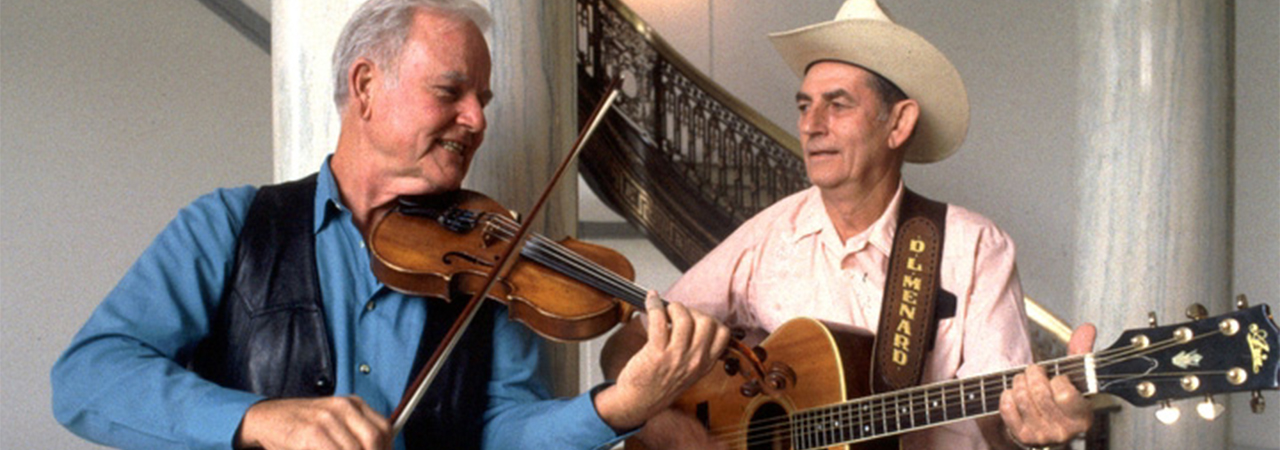
Masters of Traditional Arts is an ongoing interdisciplinary project produced by Documentary Arts. It focuses on the recipients of the National Heritage Fellowship, awarded annually by the National Endowment for the Arts since 1982. This website culminates more than three decades of work.
In the early 1980s Documentary Arts began collecting photographs, slides, audio recordings, films and videos related to the lives and careers of the National Heritage Fellows. New fieldwork led to the production of two, 52-part radio series. The first, Masters of Traditional Music, was broadcast on more than 150 stations nationwide and was selected as the Best National Music Series of 1993 by the National Federation of Community Broadcasters. The second radio series, Masters of Traditional Arts, was a co-production with WGBH Radio, Boston and was offered for national broadcast in 2001 to coincide with the 20th year of the National Heritage Fellowship program.
While completing the Masters of Traditional Arts radio series, Documentary Arts, in association with ABC-CLIO, published a two-volume biographical reference book and education guide on the recipients of the National Heritage Fellowship, 1982-2001.

Co-authored by project director Alan Govenar, Betty Carter (a retired librarian and leading authority on non-fiction books for young readers), and Paddy Bowman (Director of Local Learning: The National Network for Folk Arts in Education), the education guide is intended for students, teachers, librarians and community educators. Packaged with the first edition of the education guide was the Masters of Traditional Arts interactive DVD-Rom, containing biographical entries on 259 National Heritage Fellows, more than 3,000 color and black and white photographs, 104 radio features, 15 hours of recorded interviews and music, and 227 edited videos. An updated second edition of the DVD-Rom was released in 2007 that featured the National Heritage Fellows, 1982-2006, and was distributed nationwide: 10,000 copies were made available free of charge as part of a special publication of the National Endowment for the Arts and an additional 2,000 copies were distributed to educators around the country. An updated third edition of the DVD-Rom was released in 2011 with a special publication of the National Endowment for the Arts. The DVD-Rom contained biographical entries on 368 National Heritage Fellows, 1982-2011, more than 5,000 photographs, 550 videos, 104 radio features, and 35 hours of music and interviews.

In 2006, Documentary Arts fabricated four interactive DVD video kiosks featuring more than 300 National Heritage Fellows. Two kiosks were installed in the Old Post Office Building, and one, in the reading room of the American Folklife Center in Washington, DC. A fourth kiosk has toured to institutions around the country, including Texas Folklife Resources (Austin), Augusta Heritage Center (Elkins, West Virginia), Anderson-Abruzzo International Balloon Museum (Albuquerque), and the Museum of International Folk Art (Santa Fe, New Mexico).
In 2007, Documentary Arts began production of Connecting Cultures, a film/video series on selected National Heritage Fellows for broadcast, theatrical distribution, and educational outreach. To date, Documentary Arts has produced two half-hour films: Black on White: White and Black on African American blues pianist Alexander H. Moore and The Microtones of Simon Shaheen on Palestinian violinist and oud player Simon Shaheen; and two feature-length films, both of which are distributed by First Run Features: Master Qi and the Monkey King on Chinese Opera virtuoso Qi Shu Fang and You Don’t Need Feet to Dance on Guinean drummer, singer and dancer Sidiki Conde. Documentary Arts is currently producing a new feature-length film, tentatively titled Extraordinary Ordinary People: American Masters of Traditional Arts on the history and vitality of the National Heritage Fellowship program of the National Endowment for the Arts, 1982-2016.
In 2008, Documentary Arts began development of an exhibition, Extraordinary Ordinary People: American Masters of Traditional Arts, curated by Alan Govenar and Marsha MacDowell. The exhibition features 88 folk artists who represent a cross-section of the traditions recognized through the National Heritage Fellowship program and embody the cultural and geographic diversity of the United States. A checklist of 80-100 works including photographs, videos, interactive media and art works brings the art and lives of honorees to life in space, time and motion. Viewers are to able to experience these individuals intimately and in-depth through human-scale, still and video portraits, accompanying audio recordings, photographs documenting the artists at work and engaging with their communities.

In 2012 Documentary Arts produced two interactive Extraordinary Ordinary People: American Masters of Traditional Arts touch screens that are available for exhibition, loan and purchase. Each kiosk contains biographical entries of selected National Heritage Fellows, more than 5,000 photographs, 550 videos, 104 radio features, and 35 hours of music and interviews.

Over the years, Documentary Arts has built a vast Masters of Traditional Arts collection, including photographs, audio recordings, films, videos, ephemera and other research materials, and is currently preparing the collection for placement in the Archive of Folk Culture at the Library of Congress. Documentary Arts has created digital masters of deteriorating historic analog recordings of the live National Heritage concerts, Beta SP tapes of deteriorating Beta and U-matic videotapes and archival 16mm footage, and preservation quality masters of 350+ hours of Documentary Arts’ recordings of performances and interviews.
Masters of Traditional Arts brings together the diverse cultures and art forms represented by the National Heritage Fellowship program into a comprehensive, collaborative effort that will continue to be made accessible to the general public through the innovative use of new technologies.